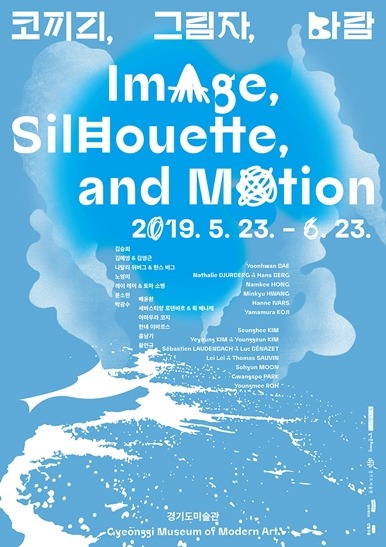
| Period| | 2019.05.23 - 2019.06.23 |
|---|---|
| Operating hours| | 10:00am - 06:00pm |
| Space| | Gyeonggi Museum of Modern Art |
| Address| | 268, Dongsan-ro, Danwon-gu, Ansan-si, Gyeonggi-do, Republic of Korea |
| Closed| | Mon., Jan. 1st, Korean Holiday |
| Price| | Free |
| Phone| | 031-481-7000 |
| Web site| | 홈페이지 바로가기 |
| Artist| |
김예영 & 김영근,나탈리 뒤버그(Nathalie DJURBERG) & 한스 버그(Hans BERG),문소현,레이 레이(Lei Lei) & 토마 소뱅(Thomas SAUVIN),세바스티앙 로덴바흐(Sébastien LAUDENBACH) & 뤽 베나제(Luc BÉNAZET),야마무라 코지(Yamamura KOJI),한네 이바르스(Hanne IVARS),홍남기,황민규
|
정보수정요청



|
|
Exhibition Information
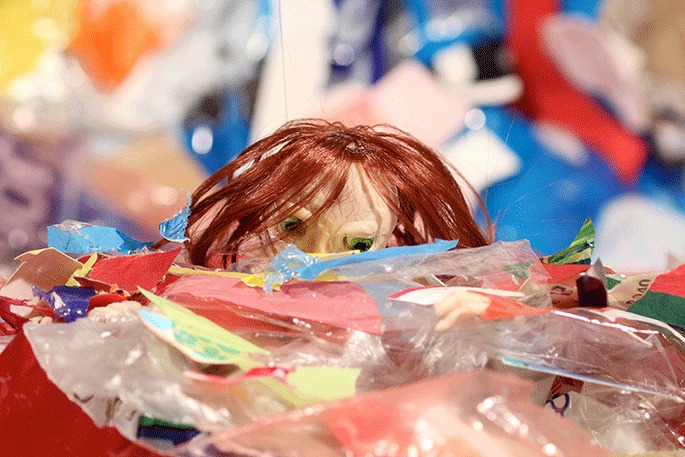
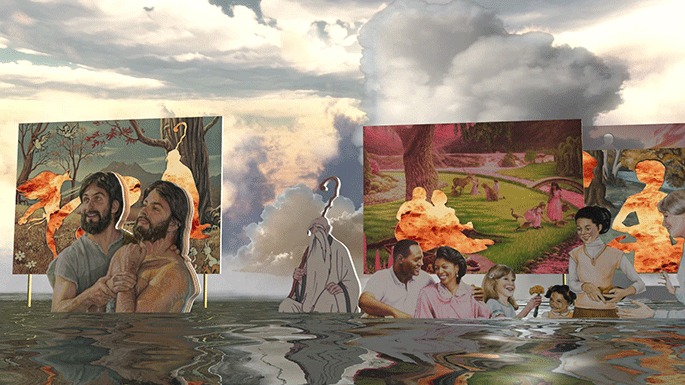
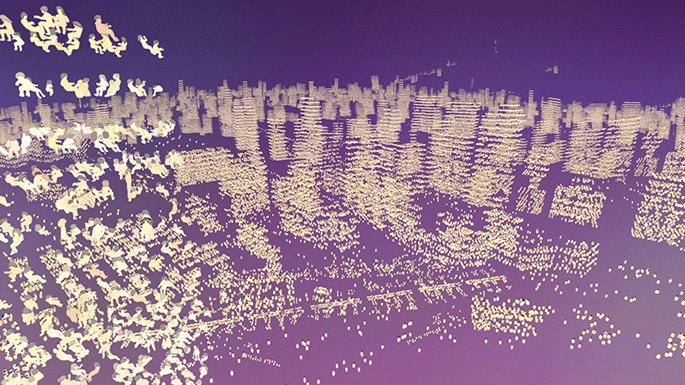
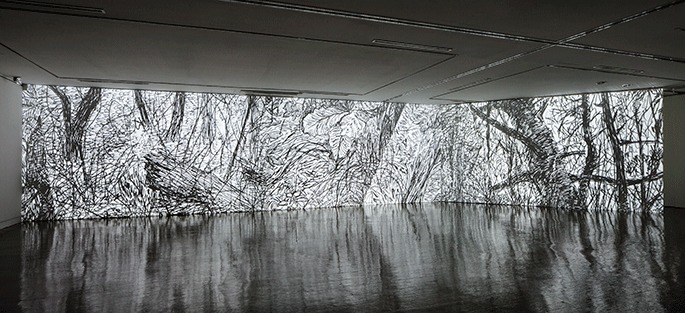
The Gyeonggi Museum of Art will hold "Elephant, Shadow, Wind Image, Silhouette, and Motion" from May 23 to June 23. The exhibition is designed to recognize our surroundings and interior anew through animation and artists' artistic consideration of visual hallucinations caused by the movement of images. Thirteen artists (Teams) who are active in contemporary art scenes or have won awards at leading domestic and foreign film festivals will participate in the exhibition to present 22 works. The exhibition title "Elephants, Shadows and Winds" figuratively represents the animation and movement of the animation elements. Elephants represent shapes in Chinese characters, while "shadow" is a silhouette projected on the screen and the fantasy it produces, and "wind" is a property that appears and disappears, indicating the elements of animation. Animation has the artistry that all of these elements create and create fantasies through the movement of shapes. In this exhibition, it is noted that animation creates fundamentally dynamic visions. Animation, which derives from the Latin word "anima," which means "giving life," brings out a visual illusion that the image seems to be moving and alive by continuously showing frames of stationary images. In addition to breathing life into images to recreate real-life movements, animation also creates visions, imagination and fantasies in a non-realistic way. The welcome logic of animation, creating a structure of fantasy or imagination between the created frames, allows us to reflect on the world and truth beyond the fixed gaze of the surrounding social environment or inner world. Participating writers captured the social phenomena around them or the world that has not been exposed to our inner world with dynamic imaginations that delve into solid reality. The exhibition works are expected to further expand the value of modern art with their unique artistic delivery through animation. We hope to take time to look into the present with a more fluid and active awareness while watching the exhibition. It was produced by French animation director Sebastian Rodenbach in collaboration with a poet. It is a four-episode animation that depicts a poem at 24 frames per second after a process called "Hear With Your Hands." Like the poem by 뤽 Benaze, in which the pieces of the word are finally completed with the reader's breathing, the frame-by-frame images become clues to imagining a movement, and within that movement, the clues to the image form a shape. A poetic animation in which a picture depicts movement as a cross between a frame, a work produced in such a way that sound precedes and motion leads a picture, as opposed to a typical animation production method in which motion leads to sound. This work is a fundamental experiment in animation language, and gives us a new way of perceiving everyday language and movements. A woman is looking into her mind. As the title of "heart" and "mirror" suggests, the painting looks into the inner images. The author recognized for himself the imperfect inner self of the self, which was suppressed by the logic of power and social ideals represented by tight lines, cultivated bodies and suits, and solved his own desire for a free mind with the synesthetic imagination of animation. Reflecting the imperfect self of modern people who can't afford to look inside their eyes and social roles, the images of the mind expressed in fragmented pieces are completed with free and dynamic energy, forming a harmonious cartoonist inside the animation work. Over the past 30 years, a series of screens featuring China's Beijing capital and residents have continued. Documentary images and the materiality of old films show unique aesthetics. Composed of photographs collected over the years by French collector Thomas Sobang outside Beijing, the work was produced with 3,000 selected photographs from about 500,000 negative films scanned by the author and collector. Recycled within a fast, continuous animation of motion, the photos prove Beijing's history of rapid growth and change from the 1980s to the early 21st century, imagining the lives of residents. Both works are animations with free copyrighted sources. The story "Parsley Girl," a story about a traditional Italian fairy tale, is collated with expired sources, from images to sounds to narration. The story of "Kim" consists of a combination of three literary works, "Kim Shin-jeon," "Mrs. Chatterley's Love" and "San-gil." When images are synthesized on the Web, the green screen that is most based is also subversively exposed to the foreground. Each element of the work responds with its own narrative, not meaning-dependent. The author anthropomorphizes the unclaimed sauces and describes the ecology of the sauces in his works as an endless wanderer. The multilayered works reflect modern people's anxious concerns about their clear identity, role and location. The city is full of people. Over the walls of tall buildings, asphalt, soot and noise, people in the city can be seen to work, work and spend their daily lives. The author looks into the lives and daily lives of people who move the city through the imagination of animation. The city's image, represented by the city's frame and shell, as a landscape of people full of body temperature and breath, brings back the landscape of life where individuals are located in the everyday life of the city. It is the story of a miser who grew a cherry tree on his head. Under the matured oak, people make a fuss, and eventually the main character pulls out the tree that grew on his head. The story is a modern reinterpretation of "Murisan," a piece of traditional Japanese narrative-based entertainment show "Rakugo." The images of a city man falling into a series of hardships and worldly and unrelenting consumption of nature are displayed on the animation's surreal, poetic epic and screen. "Black wind, bonfire, and drumming" is a mixture of animations the author produces based on a number of images collected from real and virtual worlds and imagining things he experiences and reasons in everyday life. It vibrates and breathes between the lines of drawing, where everyday-based images follow, such as the march of a fire-shaped person who is modeled after people on their way to work, a man who falls like the last moment of the game, and hand movements that predict the weather. The author fills the gap between repetitive and routine realities with fantasy, leading to a contemplative landscape filled with metaphors and rhymes. "The Way to Studio B" features thoughts that come to the writer's mind on the way to the studio or in the studio in a mixture of images and text. The author's thoughts in the process of visiting an idealized studio and going through the creative process are a crude and unrefined expression. "Self-portrait" is about a Park Je-sa, a story that begins with the writer's imagination in which words used in language communication are solidified by Park Je-sa. A torrent of words and inner murmurs appear in pieces of image and disappear. The author looks into the wriggling thoughts and words in his head and captures images that appear and disappear countless times through animation There are people who forget the function of their tongue and recognize it as a meat and muscle full of tongue, and those who just spit out their tongue while helplessly hardened. The author pays attention to basic, grottesque body parts and tongues that play a major role in language communication. In modern society, where numerous words come and go and have power in words, the voice and desire of self is brought to mind a modern man who is restrained. The camera, which continues to move along the maze-like corridors, illuminates various characters, including gangster dogs, bridal rats, smoking crocodiles and popes. Codes of clubs and hip-hop, characters mired in pleasure and ecstasy, and tools that reflect materialism create an atmosphere of violent and sexual desire. A sound that sounds in line with motion conveys it more intense and destructive. The narrow, secret passage is continuous like a chain that never ends without knowing where it begins or ends. The look that turns and turns in the maze repeatedly encounters the characters and repeats the present forever. The channel that illuminates modern society, which is reverted to hedonism and materialism, is in line with the structure and trajectory of a persistent and fundamental desire hovering over the unconscious. "Red Carpet"" "Power and Glory" "Continue of Thinking" is a series of three series under the theme "Power and Glory." The red carpet situations that bind people who symbolize wealth and honor, the conflicting fate of monsters and characters on a pile of colorful trash, and the aim, value and attitude of life that we have been trying to achieve in our struggle. The goal may not be something that has already been achieved or never been achieved, or is not worth it. The human image of modern society living in a world of materialism and consumerism is reflected in the figure in which people's odd situation. The author pauses ambition and struggle for a moment, asks essentially about humanness, and suggests imagining and jumping into the unknown world. The writer recorded, collected, reproduced, and composed the digital animation format of events in a certain place that he personally experienced, and objects, and textures in a classic movie. Images of signs, propaganda materials and documentary photographs based on facts show short stories of modern history that the writer has grown up in. The fragments of memory, each collected from different time and space, form a complex landscape, creating a surreal atmosphere with dramatic effects such as classic films. The camera's gaze on the screen evokes a welcome and unfinished sentiment of memories entangled in the facets of modern history. "I Protect You" is a pound-portage video that combines Japanese animation scenes with various events and accidents around the world. The narration, which tells the animation hero's determination, is neutralized by a video that shows the situation of the crisis and by creating a mismatch. "Star Gauging" is based on planetary data provided by NASA. It's like an errant video in the editing process, but at the same time, it's reminiscent of a digital creature with a beating heart or a life force just before a planet explodes. The author, who has viewed critically about the crisis or disaster being consumed as entertainment content in the popular culture of mesian content, borrows the grammar or visual structure of the "sekai world" dealing with the main character and the world's crisis in the re-fanimation, reminding us of the real crises we face and the sense of the imperfect world. ■ Gyeonggi Provincial Museum of Art
